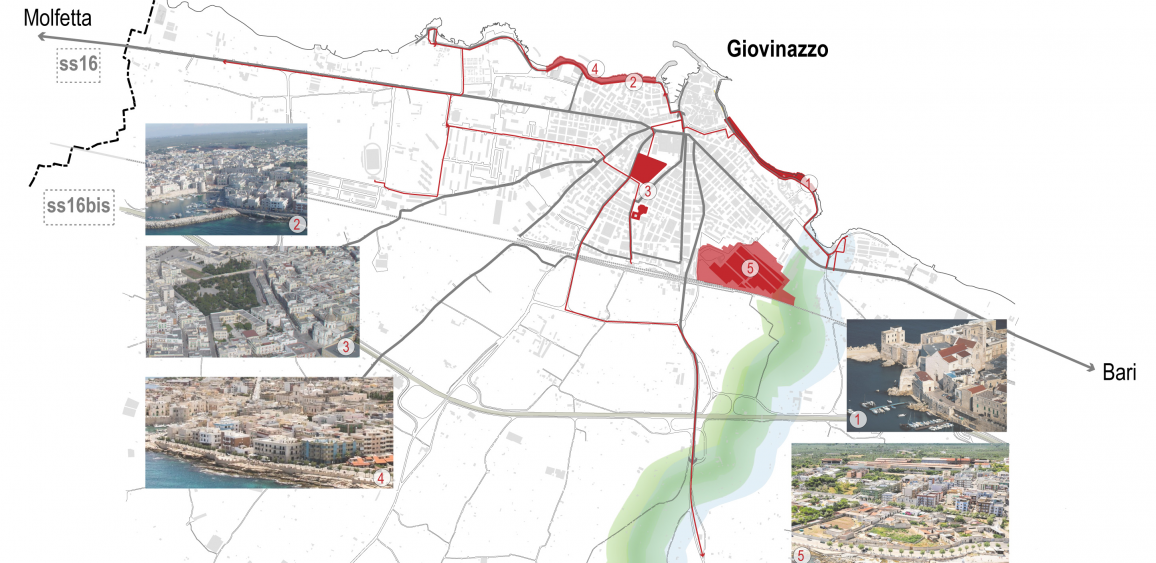The City of Giovinazzo has started the process of revision and update of its urban planning with the Preliminary Programmatic Document (DPP), approved by Resolution of the City Council n.17 of 30.03.2021, and the drafting of the General Urban Plan (PUG), being adopted, articulated in structural disposition and programmatic dispositions. Two fundamental aims: to give a framework of coherence to the significant regeneration initiatives developed in recent years (waterfront, historic center, public spaces and services, pedestrian paths, abandoned sites along the coast, etc.), as evidenced by the continuity of the awards obtained under Urbanpromo, but above all to define a clear perspective of rebalancing and redevelopment of the municipal area in reference to a shared vision of sustainable development, concretely feasible. With the intention of raising to recognizability and attractiveness of Giovinazzo, as the center of the metropolitan area of Nabari, characterized by high levels of accessibility, the variety of economic and productive activities, the offer of services and the quality of spaces and places, as part of a progressive and increasing overall sustainability.
The PUG, based on a careful survey of resources and evaluation of criticalities and potential, has defined a series of objectives and strategic actions that, in interpreting and declining locally the territorial strategies of the regional landscape plan, concern in particular:
- A reduction in land consumption, including the revisiting of forecasts of expansion no longer current; the enhancement of all undetermined spaces; the redevelopment and regeneration of the existing for a new spatial and urban planning;
- the unity of the territory by improving relations and synergies between three territorial areas now separated (coast, city, rural hinterland), also adopting forms of sustainable mobility;
- the protection of soil and natural resources for essential ecosystem services, the return of the space needed for water to flow to the sea (risk reduction);
- the integrated valorization of all the resources of the territory, overcoming the single sector of the seasonal bathing offer, for a system-territory able to offer spaces, activities and occasions to the inhabitants, the metropolitan users and the tourists;
- the environmental and eco-landscape characterization of the redevelopment and enhancement of coastal areas;
- the widespread redevelopment of urban buildings and open spaces, to improve environmental conditions, safety and urban well-being, and reduce energy consumption;
- the reinforcement of the urban reinforcement of spaces and equipment, to raise and distribute the offer of services to the city and to structure its completion in reference to central, existing and project axes and places served by sustainable mobility networks;
- the extension and reconquest of the seafront, such as open spaces, accessible to cyclists and characterized in terms of equipment, green equipment and permeability of the soil, for outdoor activities and the enjoyment of the sea;
- the quality of the landscape, as an indicator of the quality of the ways of use and transformation of the territory and the ability of the community to take care of it
Italiano
